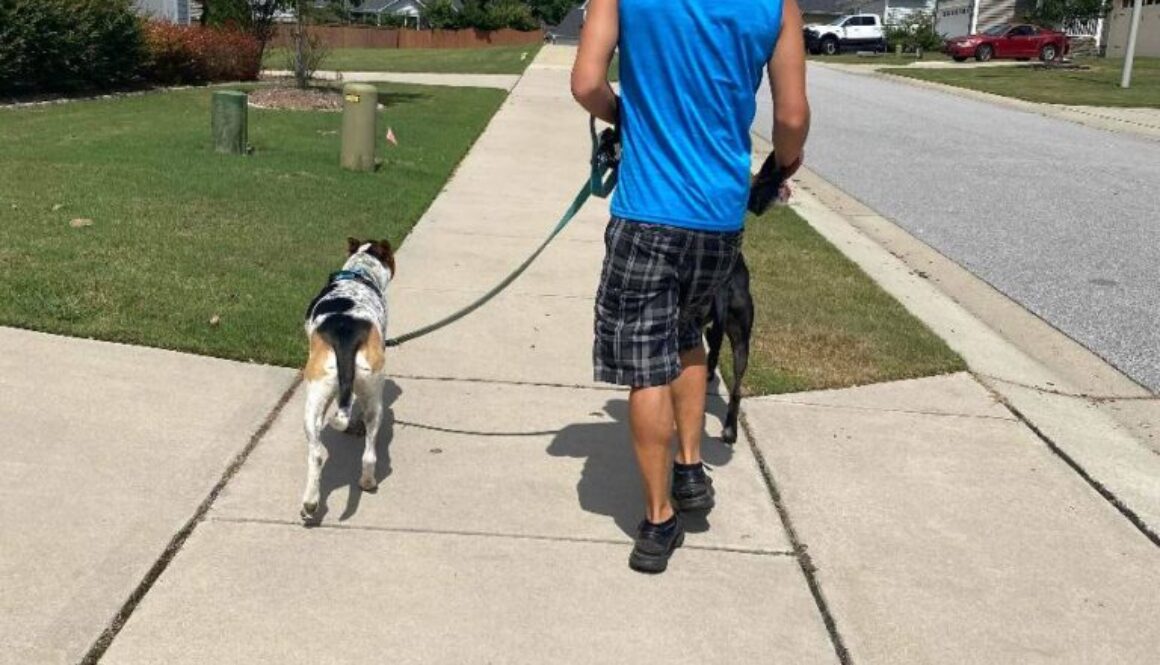Loose Leash Walking
Dogs do not just simply know how to leash-walk calmly by your side without pulling, so this skill needs to be taught. For dogs who pull, this technique can transform walks from having to fight your dog to enjoying the process.
Before you begin, know this will require patience, consistency, and dedication to seeing it through. The process will likely feel tedious or monotonous as you redefine this experience for both of you.
Beyond reducing pulling against your arm and the leash, this will also minimize tantrums, constant marking, and leash reactivity. You will be instructing them on listening to you, versus paying attention to other things around them. Key characteristics are these:
✓ Zero leash tension.
✓ Walking next to your side, not in front of you.
✓ Sniffing or marking on command.
✓ Ignoring stimuli – other dogs, people, and noises.
You’ll need a few things such as a small pouch of easy-access treats for rewarding your dog and, of course, treats. You can even replace meals in their bowl with feeding them throughout the day during training sessions. Dogs are typically food-motivated and eager to please this way.
Clickers can effectively signal a behavior you want. Use very structured walks – no sniffing, no greetings, no marking. In the beginning, give them an opportunity to use the bathroom but then the remainder needs to be structured. You also need to be mentally present – not talking, texting, or listening to music, just walking the dog. This teaches leadership and following you.
Begin with these steps, and consult a trainer for more in-depth advice:
1. Start with indoor sessions to avoid distractions. The places where they show most excitement (front door, back door, etc.) are where to practice structured walking until they learn you’re going for a walk.
2. Reserve outside time for potty and structured play in your yard only until they learn they cannot whine or throw tantrums.
3. Use time not route or distance, and walk in circles or figure eights. This removes opportunities to pull, react to animals, or become distracted by noises.
If you continue in the direction your dog is pulling, it interprets as rewarding them. Change direction when they pull or add opposing tension to teach coordinating with your movement. Lastly, vary your speed to ensure they are focused on you.

